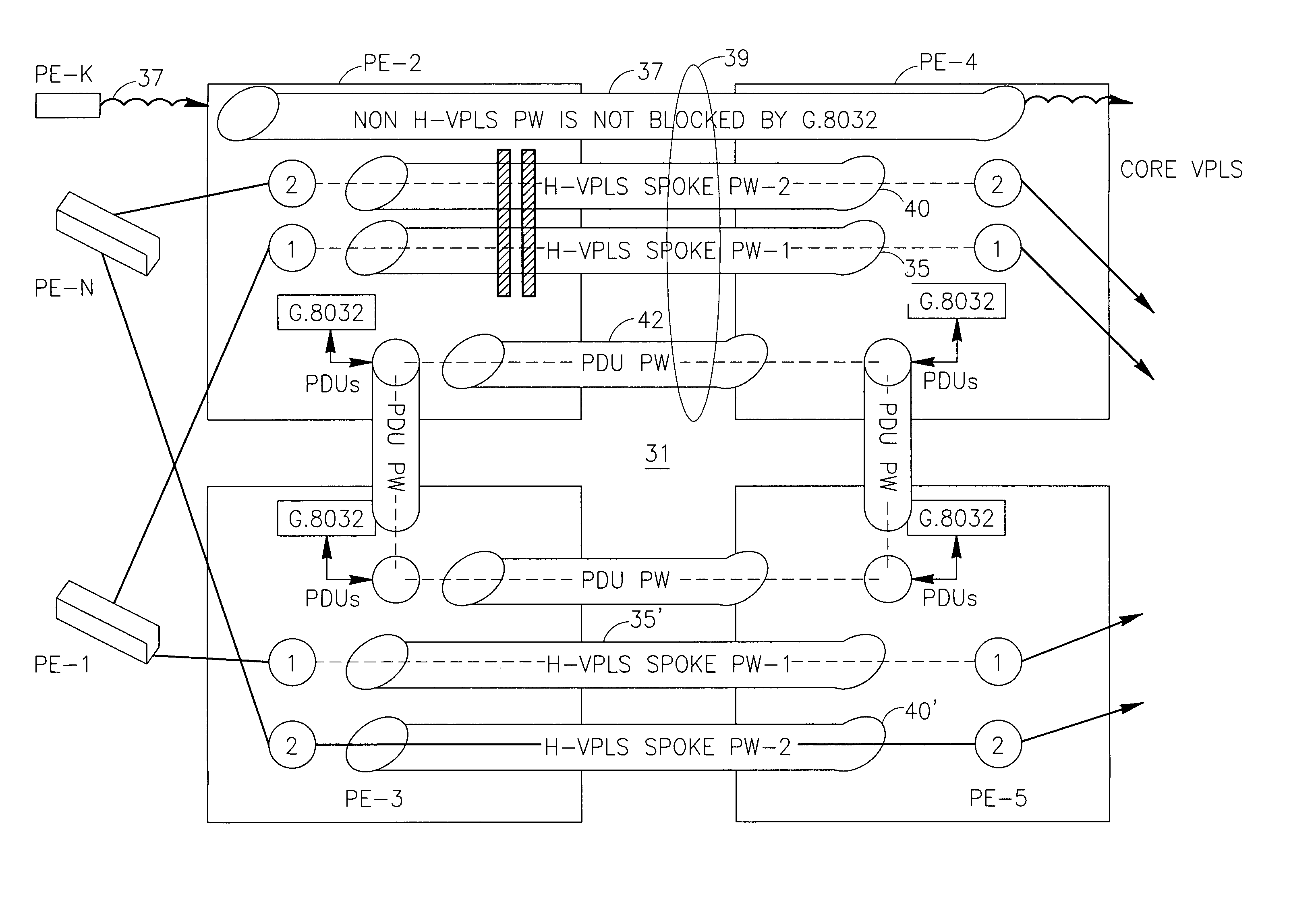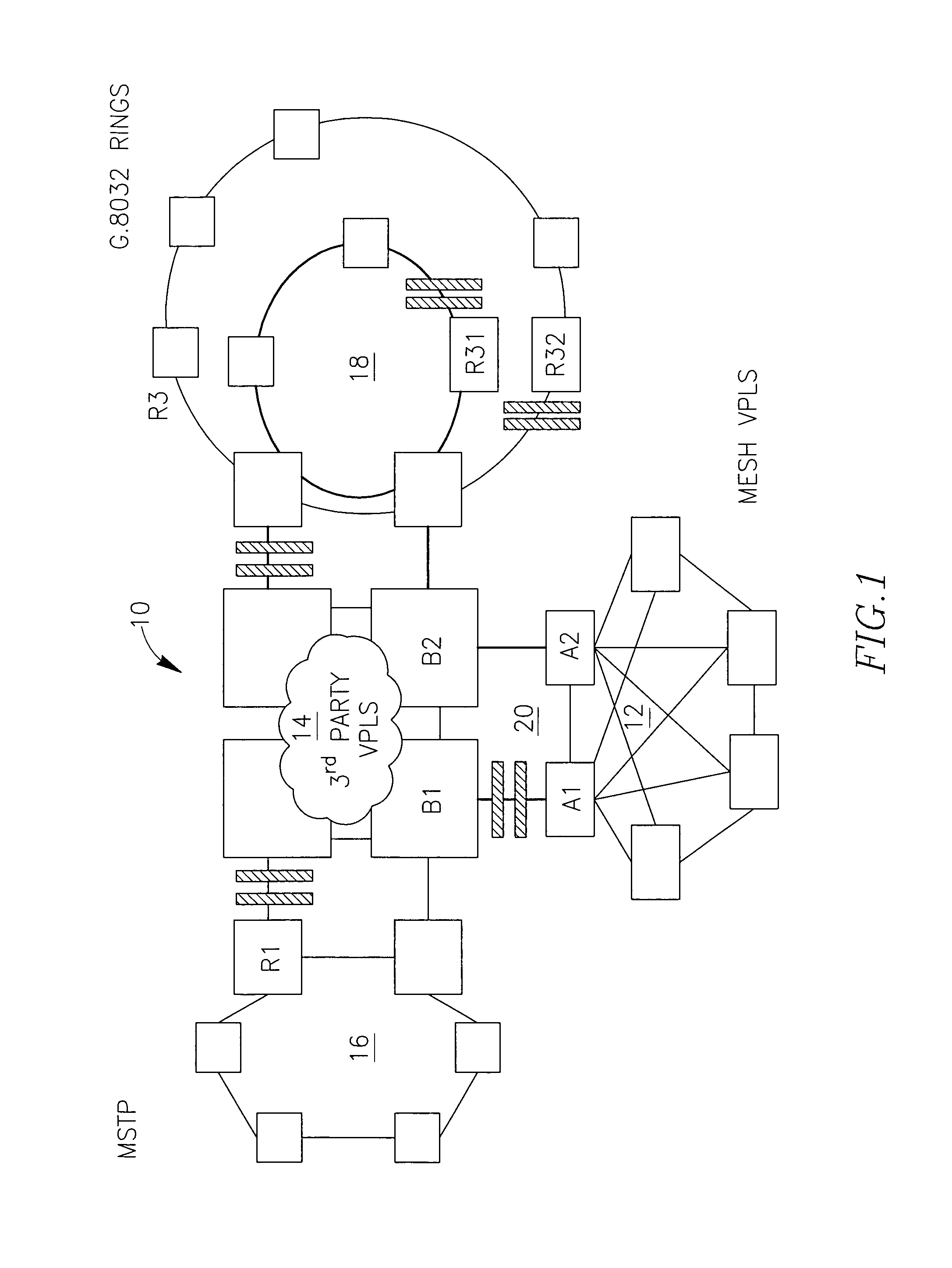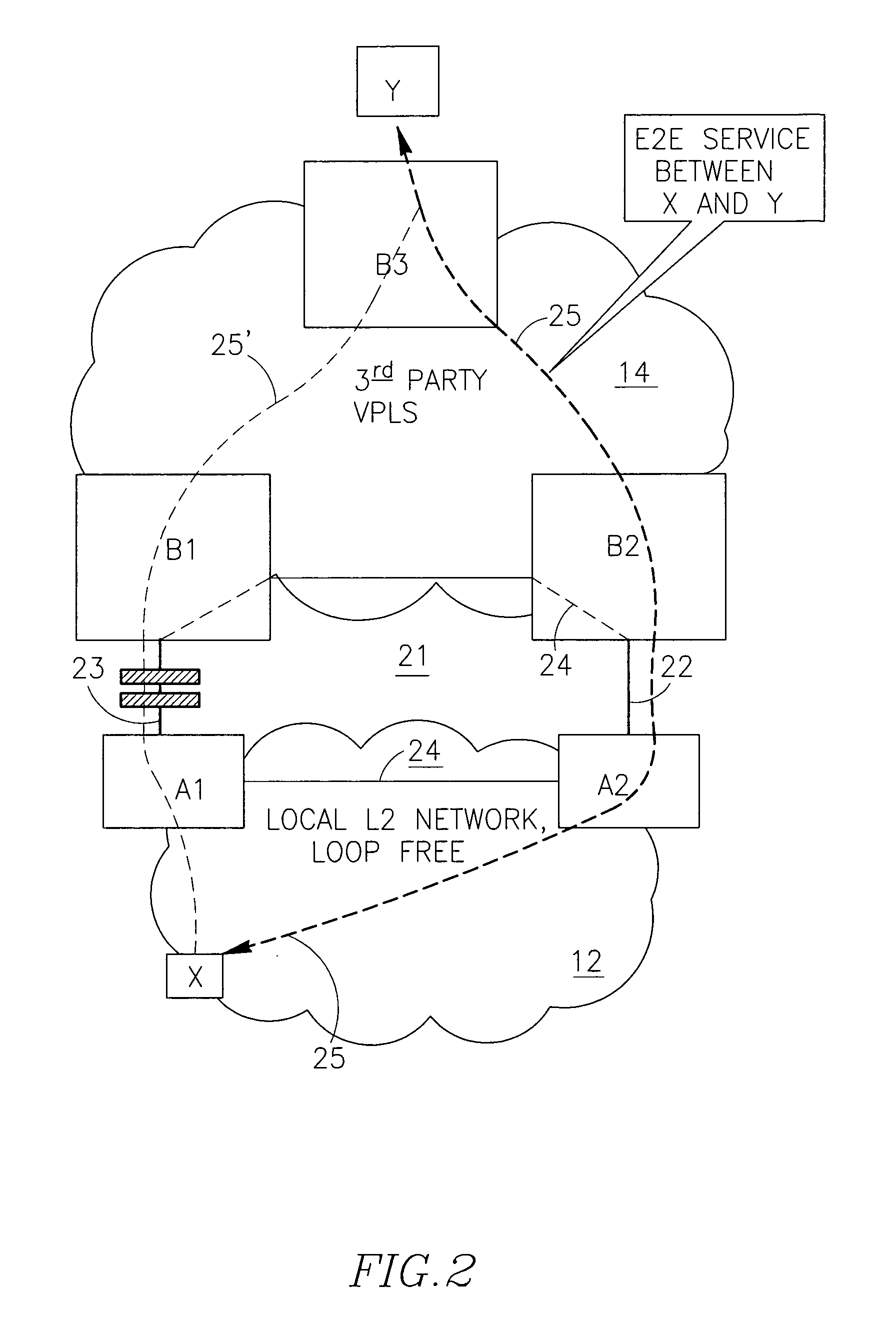Technique for dual homing interconnection between communication networks
a communication network and dual node technology, applied in data switching networks, frequency-division multiplexes, instruments, etc., can solve the problems of conventional dual node homing techniques, limited local network operators' possibilities, and inapplicability to vpls networks, so as to prevent traffic duplication/loops and protect traffi
- Summary
- Abstract
- Description
- Claims
- Application Information
AI Technical Summary
Benefits of technology
Problems solved by technology
Method used
Image
Examples
Embodiment Construction
[0071]FIG. 1 illustrates an example of a multi-domain network 10 comprising a local access network 12 (say, a mesh VPLS network), a third party network 14 being an VPLS network, a ring-like MSTP network 16 and a number of ring networks 18 which can be protected by G.8032 protocol. Network 12 is interconnected with network 14 via a dual homing configuration A1, A2, B1, B2 (schematically marked 20) where nodes (gateways, GWs) A1 and A2 belong to network 12. They can be called a first nodes group. Nodes (GWs) B1, B2 of 20 belong to network 14 and can be called a second nodes group. Other networks are interconnected with the network 14 in a similar manner.
[0072]FIG. 1 shows that each of the ring networks 18, protected by G.8032, comprises a root node (R31, R32) which keeps open (logically blocked for data traffic) one of the links connected to the root node. The open links are called Ring Protection Links (RPL) and are schematically marked with two parallel thick hatched lines symbolizi...
PUM
 Login to View More
Login to View More Abstract
Description
Claims
Application Information
 Login to View More
Login to View More - R&D
- Intellectual Property
- Life Sciences
- Materials
- Tech Scout
- Unparalleled Data Quality
- Higher Quality Content
- 60% Fewer Hallucinations
Browse by: Latest US Patents, China's latest patents, Technical Efficacy Thesaurus, Application Domain, Technology Topic, Popular Technical Reports.
© 2025 PatSnap. All rights reserved.Legal|Privacy policy|Modern Slavery Act Transparency Statement|Sitemap|About US| Contact US: help@patsnap.com



